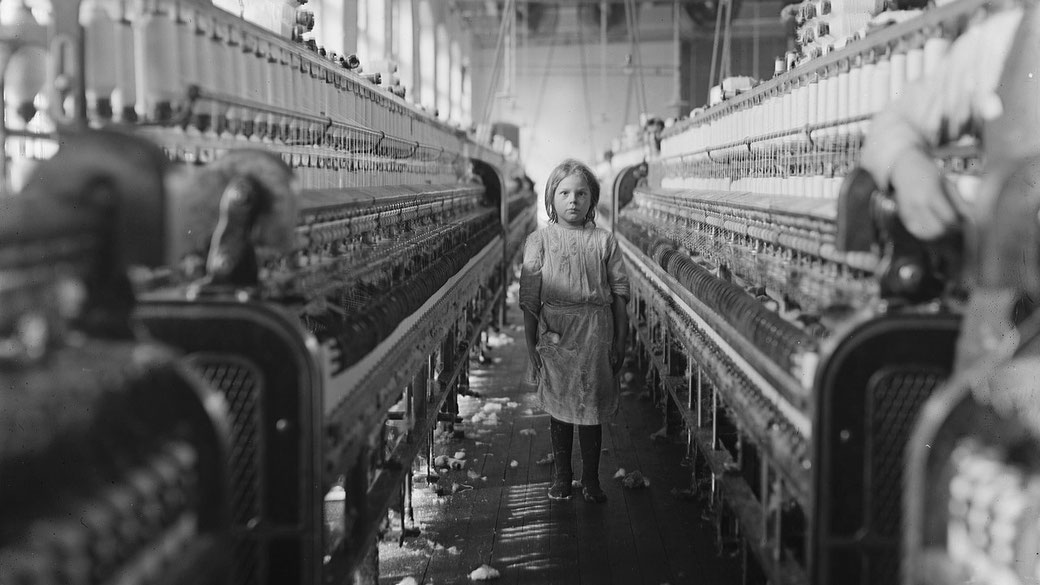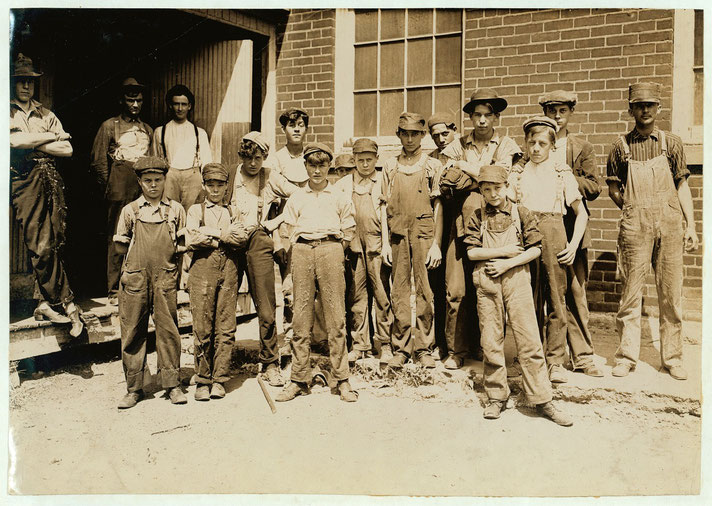7 dangerous jobs for children in the Victorian Era

During the Victorian Era, thousands of children worked in dangerous conditions to support their families. Factory owners, tradesmen, and household employers often put profit before safety, which placed young workers in jobs that exposed them to physical harm and disease that produced long-term suffering.
Britain’s weak child labour laws largely allowed such abuse to continue for most of the 19th century. According to the 1851 UK Census, more than half a million children under the age of fifteen were employed across the country in various industries.
1. Chimney sweeps
Across many towns and cities, chimney sweeps regularly employed small boys who cleaned soot-filled flues inside chimneys.
The job usually involved no formal training and required children to squeeze into dangerously narrow shafts that were sometimes just a few inches wide.
By the time they turned six, many children had already spent years during which they clambered through soot-lined walls with brushes and scrapers in hand.
Because they worked in confined spaces filled with ash, children often suffered repeated cuts and scrapes and respiratory damage, with chemical burns occurring in severe cases.
Over time, many developed a painful disease known as “soot wart,” which was a form of scrotal cancer caused by prolonged exposure to cancer-causing soot inside chimneys.
Other boys sometimes choked when they became stuck or fell from rooftops and broke their bones.
In response to public concern, Parliament had introduced the Chimney Sweepers Act in 1834.
The law was not enforced effectively until 1875, when tighter inspections and registration requirements were introduced after renewed pressure from reformers such as Lord Shaftesbury, who campaigned continuously for the protection of working children.
2. Piecers
Textile mills often relied on children who were known as piecers and who repaired broken threads on spinning machines as the equipment remained in motion.
Because their small hands could fit between the tightly packed components, employers often preferred children for the job.
Many started work before they reached the age of ten, and their workday often lasted more than twelve hours.
As a result of frequent contact with moving machinery, many children had suffered serious injuries.
Some lost fingers or entire limbs, while others collapsed from exhaustion or became ill from inhaling tiny fibres in the air.
Also, since cotton dust often filled the air in spinning rooms, piecers frequently developed long-term lung problems.
Factory inspectors had frequently documented these conditions in their official reports, in which they described very loud noise and extreme heat that worsened the risks.
Mill owners rarely acted unless forced by law. For this reason, accidents remained common until improvements in law and machinery safety gradually began to reduce the demand for child labour in the late 19th century.
3. Mule scavengers
Another textile role with extreme dangers was that of the mule scavenger. These were children who worked beneath large spinning mules, where they had to collect loose cotton from the floor.
Because the machines moved automatically along rails, children who worked there had to time their entry and exit with precision.
In many mills, supervisors instructed them to carry out their task as the machines continued to operate.
As a result, the risk of injury was near constant. Children were dragged beneath the machinery, struck by moving parts, or crushed when they failed to move in time.
Some died instantly, while others suffered injuries that left them disabled for life.
Most mule scavengers, who were between the ages of six and twelve, were often beaten if they worked too slowly.
The introduction of the self-acting mule, designed by Richard Roberts in 1825, increased the danger by making the machines move by themselves.
Investigations into factory conditions had shown severe neglect in many cases. As a result, campaigners began to pressure lawmakers for stricter safety rules and better inspections.

4. Leech collectors
In rural communities, children often earned a living as leech collectors. To perform the job, they often waded barefoot into still pools or marshes and waited for leeches to latch onto their legs.
After they collected enough leeches, they sold them to doctors and apothecaries who used them for bloodletting and other medical treatments.
The work was common in marshy areas such as East Anglia and parts of Lancashire, where waterlogged land provided easy access to leech habitats.
Due to the nature of the work, children often suffered from chronic infections and blood loss.
Anaemia became common, and wounds caused by leech bites sometimes became infected.
During colder months, leech collectors risked frostbite and hypothermia. Since most came from families with no alternative income, they usually returned to the marshes regardless of illness or injury.
The job remained widespread until medical theory had begun to shift away from bloodletting during the 1840s, but demand for medicinal leeches persisted in some areas until the 1860s, when it declined significantly.
5. Toshers (or "Sewer-hunters")
In parts of London, toshers entered the city’s sewers in search of valuable items.
They scoured the tunnels for coins, jewellery, rags, bones and scrap metal, all items that they could collect and sell.
Many children joined this underground work, especially in poor neighbourhoods near the Thames, where families lived close to sewer entrances.
Due to the dangerous environment, toshers often faced serious threats to their health and safety.
Sudden floods could drown them without warning, and gas pockets sometimes exploded when lanterns ignited flammable vapours such as methane.
Rat bites carried disease, and many children developed infections or contracted illnesses such as typhoid or cholera.
Even with the danger, the rewards often led them to return, since even a handful of scrap metal could help feed a hungry family.
By the 1870s, increased sewer maintenance and regular patrols by the Metropolitan Board of Works gradually limited access to the tunnels and contributed to the decline of this dangerous trade.
6. Matchstick girls
In match factories across London, girls who dipped wooden sticks into white phosphorus paste typically worked long hours.
This job exposed them to poisonous fumes that entered the body through inhalation or skin contact.
Most match girls came from poor families and generally had few alternatives to factory work.
Because phosphorus caused severe damage to bone tissue, many workers developed a condition called “phossy jaw.”
It began with toothaches, then progressed to swelling and abscesses, and it eventually destroyed parts of the face.
The breath of those affected often smelled of rotting flesh, due to the tissue death in the jawbone.
Employers rarely provided protective equipment and often dismissed girls once they became visibly ill.
Many of the workers were employed by Bryant & May, a company in East London that became the target of public criticism.
After the Matchgirls’ Strike of 1888, newspapers had drawn widespread attention to the working conditions, and factory owners faced public criticism.
As a result, lawmakers introduced limits on the use of white phosphorus, which eventually led to safer working conditions and the use of less toxic materials.

7. Domestic servants
Victorian households commonly employed thousands of child servants, particularly girls, who worked in kitchens, laundry rooms, and nurseries.
From before sunrise to late evening, they scrubbed floors, carried coal, prepared meals, and attended to the needs of the household.
Most earned little and received little or no education, and some slept on the floor or in small cupboards near the kitchen hearth.
Many began domestic service as young as eight or nine years old.
Due to their proximity to fire and boiling water, domestic servants often suffered burns and scalds.
Many worked when exhausted, which increased the chance of accidents. In wealthier households, young girls faced additional dangers, including verbal abuse, physical punishment, and sexual assault from male employers or guests.
Since few laws protected domestic workers and social attitudes discouraged reporting abuse, most victims generally stayed silent.
In some cases, such as the widely reported abuse of Eliza Armstrong, public outrage exposed the vulnerabilities of young working-class girls.
Over time, public campaigns for girls’ education and workplace reform began to reduce the number of children employed in private homes, but this shift occurred gradually.
What do you need help with?
Download ready-to-use digital learning resources
Copyright © History Skills 2014-2025.
Contact via email
With the exception of links to external sites, some historical sources and extracts from specific publications, all content on this website is copyrighted by History Skills. This content may not be copied, republished or redistributed without written permission from the website creator. Please use the Contact page to obtain relevant permission.





